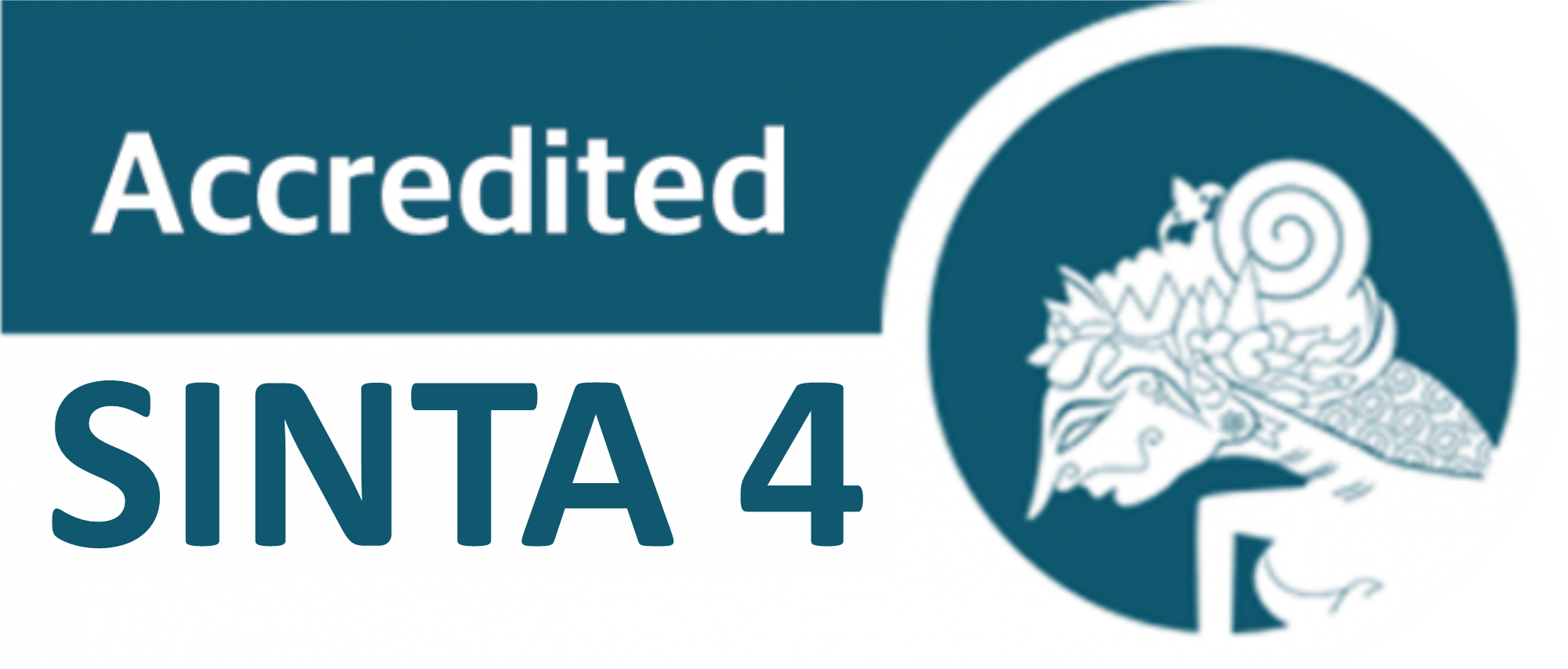
PERANCANGAN TUAS PADA KURSI RODA UNTUK MEMBANTU MOBILITAS PENYANDANG DIFABEL BERAKTIVITAS DI LUAR
Abstract
People with disabilities see wheelchairs as a solution, wheelchairs are a facility for people who can't walk or people who can't walk far. The existence of physical limitations makes a person with disabilities need more attention, a person with disabilities is someone whose rights need to be fulfilled as well as all of us. However, sometimes it is still difficult to get equal access to education, opportunities, and public facilities. The disabled, especially the physically disabled, are very likely to carry out outdoor activities independently, but must be accommodated so that they require various kinds of assistance from wheelchairs, in this case existing products or pedestrians. Mobility becomes an obstacle for them when they want to do activities outside. The design method uses Design Thinking because there is empathy which is the main foundation of this research and the research approach undertaken is descriptive qualitative, namely research conducted by processing data from interviews and observations in the form of data and analysis. Of all these problems, this research focuses on designing a product that can maximize the function of wheelchairs in activities and events even when they have to leave the house for the disabled.
Keywords: disabilities, wheelchair, mobility, design, lever.
Abstrak
Penyandang difabel tunadaksa melihat kursi roda sebagai solusi, kursi roda merupakan suatu fasilitas bagi orang yang tidak bisa berjalan atau orang yang tidak bisa bisa berjalan jauh. Adanya keterbatasan fisik membuat seorang difabel membutuhkan perhatian lebih, Difabel adalah seseorang yang perlu dipenuhi haknya sama halnya dengan kita semua. Namun, terkadang masih sulit mendapatkan akses yang sama di pendidikan, kesempatan, hingga layanan fasilitas umum. Difabel terkhusus tuna daksa sangat memungkinan untuk melakukan aktivitas luar secara mandiri, namun harus diakomodasi sehingga membutuhkan berbagai macam bantuan fasilitas dari kursi rodanya dalam hal ini produk eksisting ataupun pedestrian. Mobilitas menjadi hambatan mereka ketika ingin melakukan aktivitas di luar. Metode perancangan menggunakan Design Thinking dikarenakan terdapat empati yang menjadi landasan utama penelitian ini dan pendekatan penelitian yang dilakukan ialah kualitatif dekspriptif, yaitu penelitian yang dilakukan dengan mengolah data dari hasil wawancara dan observasi yang berupa data dan analisis. Dari seluruh permasalahan tersebut, penelitian ini berfokus pada perancangan sebuah produk yang dapat memaksimalkan fungsi dari kursi roda dalam beraktivitas dan acara apapun bahkan ketika harus keluar rumah bagi difabel.
Kata Kunci: difabel, kursi roda, mobilitas, tuas.
Authors:
Ahmad Riyadi Swandhani : Insitute Teknologi Bandung
Deddy Wahjudi : Insitute Teknologi Bandung
References:
Ady, W. G. (2011). Pengembangan Desain Kursi Roda Khususnya pada Lansia Berdasarkan Citra (Image) Produk Dengan Metode Kansei Engineering. Surakarta: Institutional Repository.
Aziz, S. (2014). Pendidikan Seks Bagi Anak Berkebutuhan Khusus. Jurnal Kependidikan, 2(2), 182-204.
Batan, I. (2006). Pengembangan Kursi Roda Sebagai Upaya Peningkatan Ruang Gerak Penderita Cacat Kaki. Jurnal Teknik Industri 8(2), 97-105.
Carr, S., Francis , M., Rivlin , L. G., & Stone , A. M. (1992). Public Space. Cambridge University Press.
Dewang, N., & Leonardo , L. (2010). Aksesibilitas Ruang Terbuka Publik bagi Kelompok Masyarakat Tertentu Studi Fasilitas Publik bagi Kaum Difabel di Kawasan Taman Suropati Menteng-Jakarta Pusat. Planesa, 1(1), 213267.
Erwin, W. (2017). Strategi dan Metode Mengajar Siswa Di Luar Kelas. Yogyakarta: Ar-Ruzz Media.
Lynch, K. (1965). The City as Environment. Scientific American, 213(3), 209-221.
Munawar, I. (2009). Hasil Belajar (Pengertian dan Definisi). Jakarta: Rineka Cipta.
Priest, S. (1986). Redefining Outdoor Education: A Matter of Many Relationships. The Journal of Environmental Education, 17(3), 13-15.
Saitta, M., Devan, H., Boland, P., & Perry, M. A. (2019). Park-Based Physical Activity Interventions for Persons With Disabilities: A Mixed-Methods Systematic Review. Disability and Health Journal 12(1), 11-23.
Santoso, M. &. (2017). Pergeseran paradigma dalam disablitas. Intermestic: Journal of International Studies 1(2), 166-176.
Seragih, Y. G., & Azis, A. C. K. (2021). Tinjauan Hasil Gambar Ilustrasi Kartun dengan Objek Binatang. Ekspresi Seni: Jurnal Ilmu Pengetahuan dan Karya Seni, 23(2), 302-318.
Soetam, R. (2011). Konsep Dasar Rekayasa Perangkat Lunak. Jakarta: Jakarta Prestasi Pustaka Press.
Sugiyono, D. (2013). Metode Penelitian Pendidikan Pendekatan Kuantitatif, Kualitatif dan R&D. Alfabeta.
Suharto, S., Kuipers, P., & Dorsett , P. (2016). Disability Terminology And The Emergence of ‘Diffability’in Indonesia. Disability & Society, 31(5), 693-712.
Suryani, N., Martati, B., & Setiawan, F. (2023). Analisis Karakter Mandiri Dalam Kegiatan Outdoor Siswa Kelas III Sekolah Dasar. Journal on Education, 6(1), 2235-2243.
Walzer, M. (1990). The Communitarian Critique of Liberalism. Political Theory, 18(1), 6-23.
Wibawa, M., & Suci, A. W. (2021). Perancangan buku “Komunikasi dalam Isyarat” sebagai Media Pengenalan Huruf Hijaiyah untuk Anak Tunarungu Berbasis Ilustrasi. Gorga: Jurnal Seni Rupa, 10(1), 201-214.
Keywords
Full Text:
PDFDOI: https://doi.org/10.24114/gr.v12i2.47680
Article Metrics
Abstract view : 76 timesPDF - 64 times
Copyright (c) 2023 Ahmad Riyadi Swandhani

This work is licensed under a Creative Commons Attribution-ShareAlike 4.0 International License.
![]()
![]()
![]()
Gorga : Jurnal Seni Rupa
Email: gorgajurnalsenirupa@unimed.ac.id
Jl. Willem Iskandar, Pasar V, Medan Estate, Medan City, North Sumatra Province, Postal Code 20221. Phone/fax: (061) 661 3365 / +6285278021981.
This work is licensed under a Creative Commons Attribution-ShareAlike 4.0 International License







